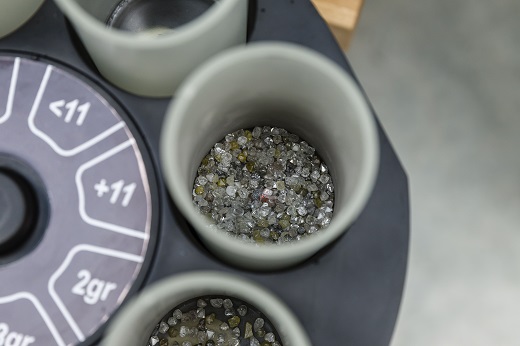|
|
Russian Goods Cut Elsewhere Are Legal: JVC
Mar 15, 2022 4:54 AM
By Joshua Freedman
|
|
|

RAPAPORT... Russian-mined diamonds polished in other locations are allowed into the US under the latest import sanctions — but buying them is risky, says the Jewelers Vigilance Committee (JVC).
President Joe Biden’s March 11 executive order prevents the import of items with either of two harmonized tariff codes: 7102.31.00 or 7102.39.00. The first refers to “unworked or simply sawn, cleaved or bruted” diamonds, or what the trade usually calls rough diamonds. The second refers to polished diamonds.
Therefore, Americans can no longer buy rough directly from miner Alrosa or other sources of Russian rough, or purchase from the country’s polished manufacturers.
However, rough that underwent “substantial transformation” — which includes cutting and polishing — in other countries remains legal, the JVC noted. The organization explained this Monday in a member alert based on frequently asked questions (FAQs) that appear on the US Office of Foreign Assets Control (OFAC) web page.
“Substantial transformation” means the goods gained value through a fundamental change in form and appearance, JVC deputy general counsel Sara Yood told Rapaport News. If that took place in India, the US customs authorities now consider the stone to be of Indian origin. The US’s National Commodity Specialist Division (NCDS) evoked this principle in a 2019 ruling about Botswanan rough processed in several countries.
“So rough diamonds cut and polished in Russia are not allowed, but rough diamonds from Russia cut and polished in India would be,” Yood continued. “Rough diamonds cut and polished in Russia and then recut in India would not be, as customs would likely not see that as substantial transformation.”
Sawing a rough diamond or setting polished into jewelry is not enough of a change, she added.
The clarification significantly reduces the scope of the new rules, as the US’s rough imports are relatively low, and Russia supplies only a small amount of polished. America’s total rough imports from all sources reached $486 million last year, compared with polished intake of $19.38 billion. Alrosa registered US revenues of just RUB 942 million ($8.3 million) in 2021, including both rough and polished. Most Alrosa rough that enters the US comes via midstream players in India and Belgium.
“It’s a little disappointing, because it makes me think that this import ban is probably going to have a limited effect,” Yood continued. “What it really hinges on is how strong the US alliance is with other countries and whether other countries also follow suit, because I think the ultimate goal is to close off the avenues for Russia to sell these products. The US is probably really hoping that allies step up and implement similar sanctions.”
Other countries could still introduce their own bans, and OFAC could expand the sanctions, Yood said. For those reasons, the trade should be cautious about buying any Russian diamonds, even if they were polished somewhere else, she advised.
“Yes, this is still legal, but it’s inherently risky,” Yood asserted.
Image: Rough-diamond sorting. (Alrosa)
|
|
|
|
|
|
|
|
|
|
Tags:
Alrosa, Jewelers Vigilance Committee, Joshua Freedman, JVC, National Commodity Specialist Division, NCDS, OFAC, Office of Foreign Assets Control, polished, Polished Diamonds, rough, Rough Diamonds, Sara Yood, US
|
|
|
|
|
|
|
|
|
|
|

|
|